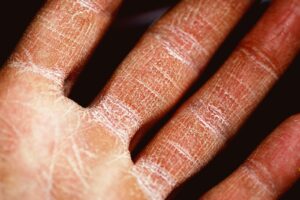Colin Timmins, director of member services at BEAMA outlines why ventilation improvements are essential to the success of the Green Homes Grant scheme.
The Government recently announced further details of the Green Homes Grant, due to launch in September, including the array of insulation measures that can be installed.
While the new scheme will offer vital funds to improve energy efficiency, reduce energy bills and provide new jobs, which we welcome, it also risks causing health impacts from poor indoor air quality if a lack of funding means we fail to match these insulation retrofits with improved ventilation measures.
We spend around 90% of our time indoors and 16 hours a day on average at home.
In light of the pandemic, these figures will have increased even further for many people.
The risk of exposure to pollutants indoors is, therefore, likely to be greater than outdoors, particularly given that indoor air can contain up to 900 potentially dangerous chemicals, particles and biological materials.
The impact of poor indoor air quality is now widely evidenced. It is reported to have an annual cost to the UK of over 204,000 healthy life years, with 45% of those lost to cardiovascular diseases, 23% to asthma and allergy, and 15% to lung cancer.
In 2012 the World Health Organization reported that indoor air pollutants were responsible for around 99,000 European deaths a year.
The Royal College of Physicians has warned that indoor air pollutants cause, at a minimum, thousands of deaths per year in the UK and are associated with healthcare costs in the order of ‘tens of millions of pounds’.
The trend towards energy-efficient, airtight homes, which can cause poor indoor air quality, is already firmly underway.
A report published in January 2020 by the Royal College of Physicians (RCP) and the Royal College of Paediatrics and Child Health (RCPCH) specifically identified that improved insulation needed to be matched with adequate ventilation to prevent the build-up of pollutants in the home.
Similarly, the Committee for Climate Change identified in their recently published ‘Reducing UK emissions: 2020 Progress Report to Parliament’, that ventilation needs to be considered as part of any renovation projects.
Legal requirements for ventilation with energy efficiency measures are already in place.
Part F of the Building Regulations stipulates that adequate means of ventilation must be provided for people in a building and that any renovation work on existing buildings must not worsen the rest of the building below the standards prior to the retrofit.
Insulation, double glazing and draughtproofing will all increase the airtightness of a building. Many existing buildings rely on natural rather than mechanical ventilation, leading to insulation retrofits that make the provision of ventilation less satisfactory, necessitating further action.
This view is endorsed by PAS 2035:2019 — a report sponsored by the Department for Business, Energy and Industrial Strategy — which provides a framework of standards on how to conduct effective energy efficiency retrofits in existing buildings and drives the ‘whole-house approach’ to renovation projects.
While we wholly welcome the new scheme, it is vital that we adhere to the quality processes established in recent years so that energy efficiency measures are installed to standards that ensure consumers receive the full benefits.
Including funding for ventilation measures alongside insulation, improvements will help prevent poor indoor air quality by removing pollutants from the home and protect people’s health and wellbeing.
To this end, it was encouraging to see the Government’s commitment that any tradespeople who carry out insulation improvements as part of the new scheme must register for TrustMark or Microgeneration Certification Scheme (MCS) accreditation, which will ensure they follow required standards.
Incorporating funding for ventilation measures in the grant scheme will also help insulation installers, ensuring that the need for ventilation is not seen as an extra burden on consumers, but part of delivering a quality job under the grant scheme.
The tools to facilitate this are already in place too. The ventilation industry, in conjunction with NICEIC, has recently introduced a Training and Competent Persons Scheme which provides the resources for job creation in this sector.
While it is certainly encouraging to see the introduction of a retrofit scheme, which is desperately required to improve the existing housing stock in the UK, funding for ventilation measures should be included as part of the grant to help avoid poor indoor air quality, protect the health of the nation, and ultimately deliver a truly comprehensive scheme.

















Leave a Reply